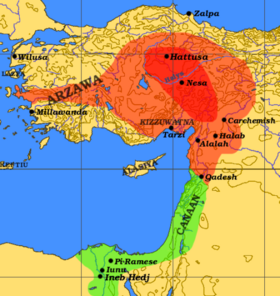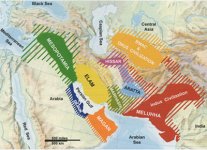Sile
Banned
- Messages
- 5,110
- Reaction score
- 582
- Points
- 0
- Location
- Australia
- Ethnic group
- North Alpine Italian
- Y-DNA haplogroup
- T1a2 -Z19945..Jura
- mtDNA haplogroup
- H95a1 ..Pannoni

the dark red ellipse on the map :
Nesa and Hattusa were in Hatti land, speaking Hurrite language
they were subjected by the Hitite speaking peoples in the southeastern edge of the dark red ellipse
those were the IE folks that founded the Hitite empire
the elite spoke Hitite, but natives of the Hatti land continued to speak Hattian
many soldiers were Hattians
hattusa is the capital of the hittites ..............hittite language formed from hatti language and then was replaced by luwian.................none have any semitic components, not even the northern levant .
these are the origins of indo-european along with sanskrit





